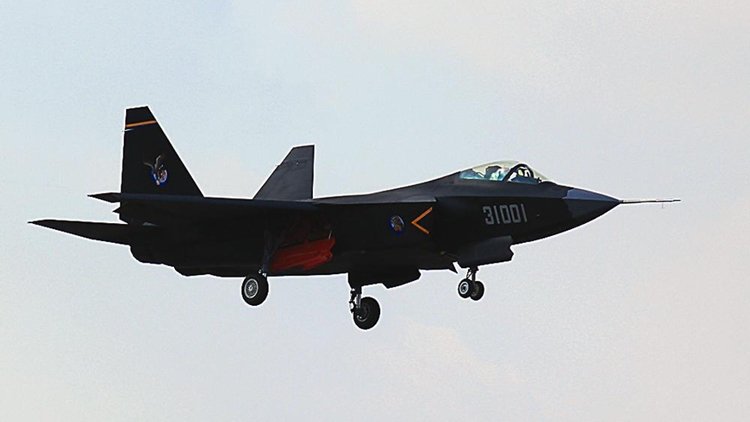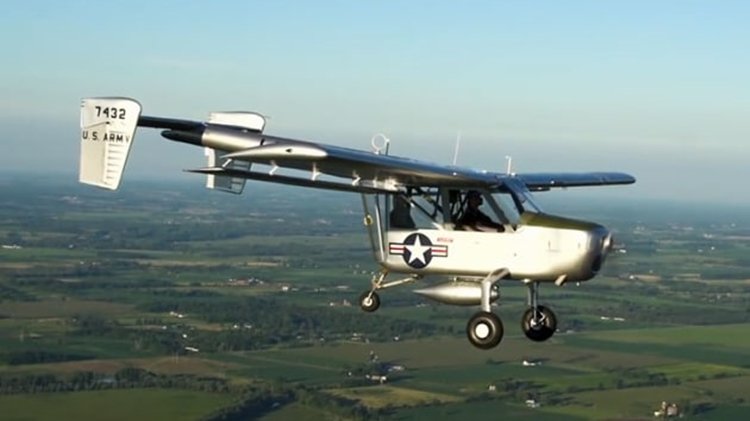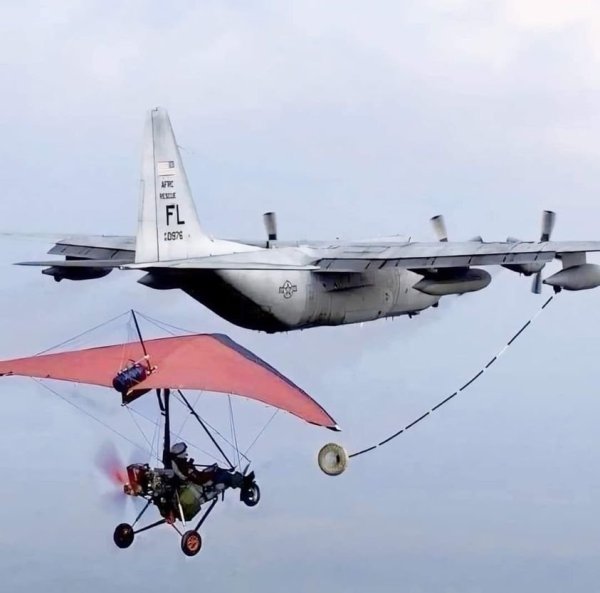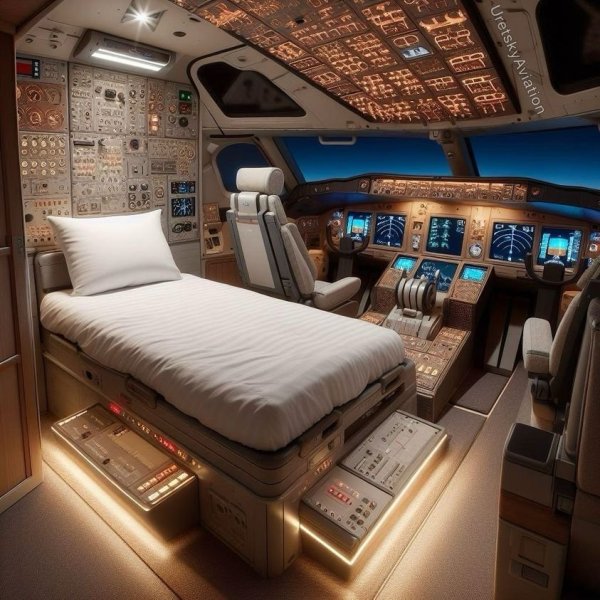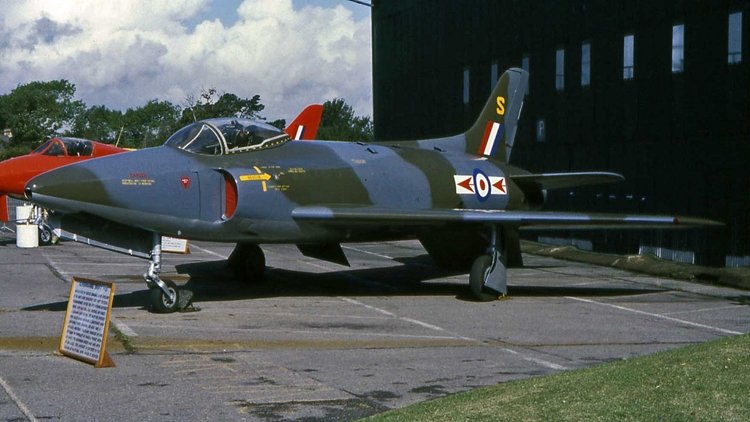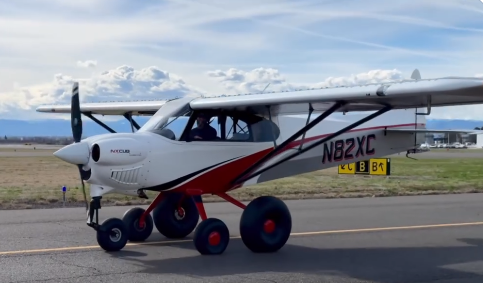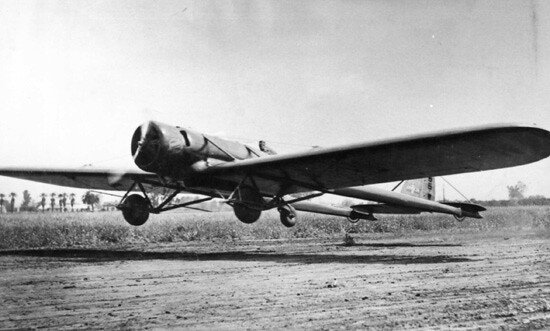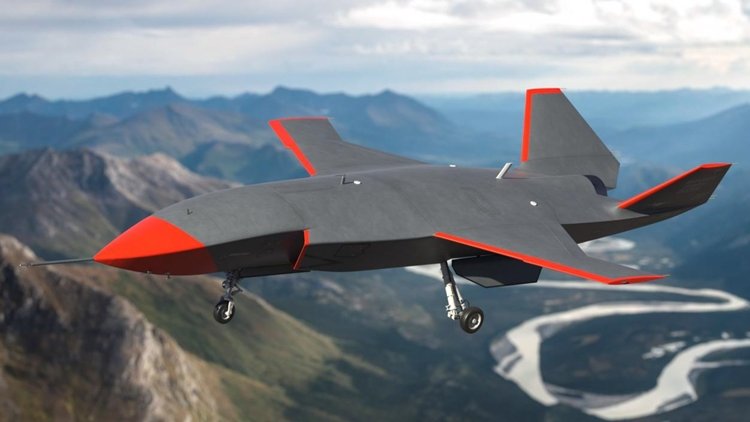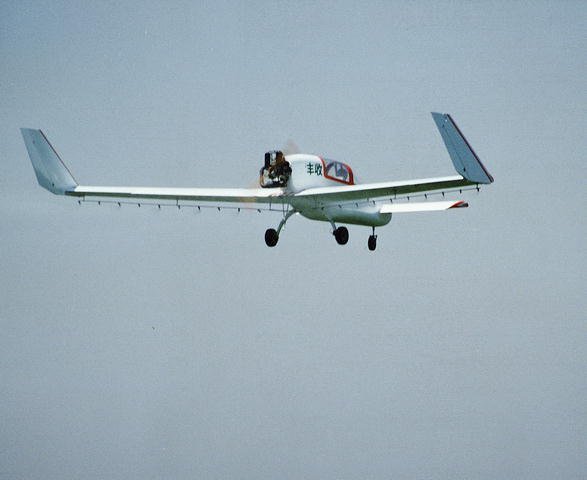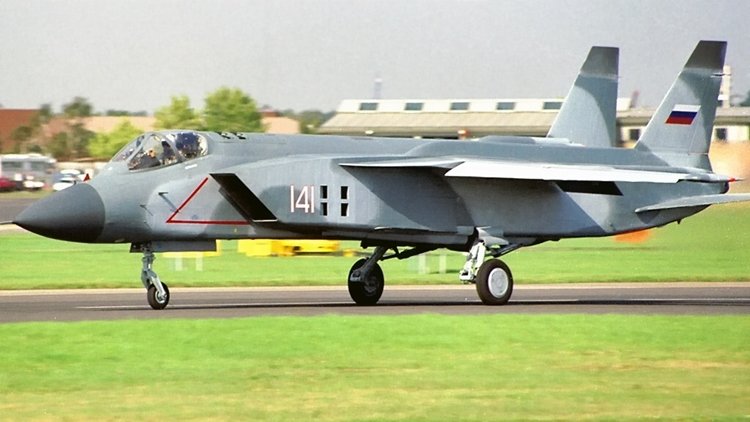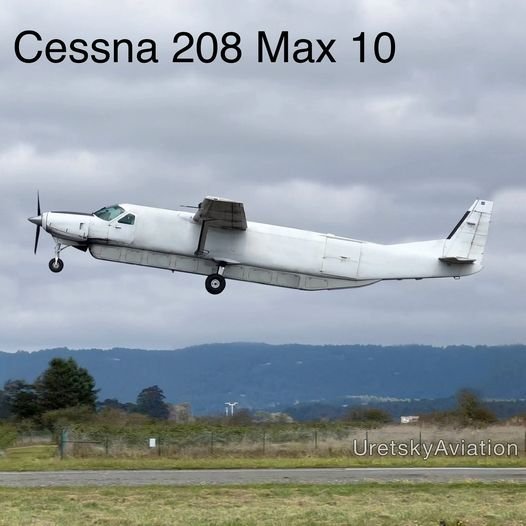-
Posts
7,582 -
Joined
-
Last visited
-
Days Won
67
Content Type
Profiles
Forums
Gallery
Downloads
Blogs
Events
Store
Aircraft
Resources
Tutorials
Articles
Classifieds
Movies
Books
Community Map
Quizzes
Videos Directory
Everything posted by red750
-
The Croses EC-6 Criquet ("Locust") is a 1960s French two-seat homebuilt aircraft designed by Emilien Croses. The EC-6 Criquet is a design for a homebuilt aircraft with a tailwheel landing gear, and tandem wing configuration similar to the Mignet Pou-du-Ciel family. It has two side-by-side seats. It first flew in 1965, and seven examples had flown by 1977, with more than 60 known to be under construction. The EC-6 Criquet Léger (Mini Criquet) is an ultralight variant. The LC-6 Criquet is an improved version developed by Gilbert Landray. The LC-10 Criquet was developed by a Mr Millet of Société Co-Plasud who used fibreglass construction throughout the entire aircraft. It was used as a trainer by the Aéro-Club du Maconnais. While considerably more expensive to build than a conventional wooden Criquet, the fibreglass version was also 80 kg (180 lb) heavier. As well as being used for local flying, the Criquet has been flown to both national and international light aircraft rallies. A French owned example visited the 1992 rally at RAF Wroughton airfield near Swindon, Wiltshire, England. Variants EC-6 Criquet (English:cricket) The original version designed by Emilien Croses. EC-6 Criquet Léger An ultralight version. LC-6 Criquet (LC - Landray-Coses) The EC-6 modified and improved by Gilbert Landray. LC-10 Criquet (LC - Laibie-Coses) An all fibre-glass version of the EC-6 built by M. Millet of Société Co-Plasud (president of the Aero-club de l'Aude). A second LC-10 was built by M. Barrière
-
The Shenyang FC-31 Gyrfalcon (Chinese: 鹘鹰; pinyin: Gǔ yīng), also known as the J-31 or J-35, is a Chinese prototype mid-sized twinjet 5th-generation fighter aircraft developed by Shenyang Aircraft Corporation (SAC). The official nickname published by SAC is "Gyrfalcon", though it has also been referred to as the "F-60" or "J-21 Snowy Owl" (Chinese: 雪鸮) in some media reports, or "Falcon Hawk" by some military enthusiasts. J-XX nomenclatures in the Chinese military are reserved for programs launched and financed by the People's Liberation Army, while the FC-31 plane was developed independently as a private venture by the aircraft manufacturer. While the Chengdu J-20 stealth fighter was officially endorsed by the People's Liberation Army Air Force after Chengdu Aerospace Corporation's proposal won the PLAAF bid for the next-generation jet fighter, Shenyang Aircraft Corporation pressed on and developed a private project aiming to secure potential export customers. A photo of a model labeled F-60 was posted on the Internet in September 2011. In June 2012, photos and phone camera video clips started to emerge on internet regarding a heavily overwrapped fighter plane airframe (widely suspected to be the F-60 prototype) being road-transferred on a highway, earning the nickname "the zongzi plane" (Chinese: 粽子机) among Chinese netizens, though some suspect it of merely being an L-15 trainer aircraft. Pictures of a possibly fully assembled aircraft parking on an airfield emerged on 15 or 16 September 2012. The F-60 is reported to be the export version, where the J-31 would be the domestic Chinese version of the same fighter. Chinese aviation expert Xu Yongling has called the J-31 an export-oriented low-end latest generation warplane. It is very likely that the J-31 will be inducted as a carrier-based naval fighter. In an interview with China's state-run media, FC-31's chief designer Sun Cong expressed that the aircraft would follow his J-15 onto China's aircraft carriers. However, officials from AVIC only said that the aircraft was intended for export as a competitor to the F-35. There has also been reports that the PLAN has urged Shenyang to develop a carrier-compatible version of J-31. In 2015, Jiangsu A-Star Aviation Industries Company marketed its EOTS-86 infra-red search and track as a possible addition to the J-31. An improved prototype, with modifications to the vertical stabilizers, wings, and airframe, an electro-optical targeting system, a larger payload, improvements in stealth, and upgraded electronics, made its maiden flight in December 2016. In November 2018, an Aviation Week article stated that the FC-31 program has received government funding and is being sought after by both the PLANAF and PLAAF, according to official sources. In June 2020, reports surfaced that a third variant of FC-31, albeit a more production-ready version with smoother lines, a bigger radome for a bigger radar, and a closer alignment of control surfaces to reduce the radar signature, had been developed. The "new fighter" has been referred to by some as J-35. On October 29, 2021, the modified carrier-based variant of the FC-31, dubbed J-35 by commentators, made its maiden flight. It is intended to operate from the forthcoming Type 003 aircraft carrier with an electromagnetic catapult system. The naval variant is based on the second prototype of the FC-31, but also includes a catapult launch bar and a folding wing mechanism. For further details, click here.
-
The Scaled Composites Model 133-4.62 ATTT, or Advanced Technology Tactical Transport was a technology demonstration project built by Burt Rutan's Scaled Composites in 1986 under contract to DARPA. In the mid-1980s, the American government agency DARPA, developed a concept for a tandem wing STOL transport, intended to act as a technology demonstrator and to meet a requirement for a long-range high-speed transport for US special forces, intended to fill the gap between helicopters and larger transport aircraft such as the C-130 Hercules. In 1986, DARPA placed a contract with Scaled Composites, a company set up by Burt Rutan and owned by Beechcraft to build prototypes for advanced aircraft, for a 62% scale proof-of-concept demonstrator for the concept, called the Advanced Technology Tactical Transport (shortened to ATTT or AT3). The ATTT had high-aspect ratio tandem wings, which were joined by long nacelles which carried the aircraft's engines, tractor configuration turboprops, large fuel tanks and the as well as the main undercarriage units for the aircraft's retractable tricycle landing gear. As first built, it had a conventional, cruciform tail. A novel arrangement of eight fast acting fowler flaps was fitted, inboard and outboard of the engines on each of the wings. These would be extended rearwards in a low-drag configuration prior to commencing the take-off run then quickly lowered to increase lift at the point of take-off. The aircraft was of composite construction, mainly glassfibre and carbon fibre. It was powered by two Pratt & Whitney Canada PT6A-135 turboprops. he ATTT demonstrator made its maiden flight on December 29, 1987 from Mojave Airport, base of Scaled Composites. It completed its initial test program of 51 test flights, with a total of 112 flying hours, on November 8, 1988. It was then rebuilt with a revised tail, with a twin-boom configuration replacing the original single cruciform tail unit, with the fuselage shortened and a rear-loading ramp fitted. The revised layout improved handling, lowering minimum single-engine safety speed (which was previously significantly higher than the stall speed). A further 13 test flights were flown to evaluate the revised layout. The aircraft has been de-registered and is currently in storage at the Air Force Flight Test Center Museum at Edwards Air Force Base.
-
The Boeing L-15 Scout or YL-15 was a small, piston engine liaison aircraft built by Boeing in very small numbers after World War II. It was a short take-off and landing (STOL) aircraft powered by a 125 hp Lycoming engine. The L-15 was an attempt by Boeing to expand its product line as World War II drew to a close, and Boeing's production of combat aircraft declined. Boeing decided against marketing the L-15 as a general aviation aircraft, and the twelve that were produced went to the United States Army for testing, then were transferred to the United States Fish and Wildlife Service in Alaska for various duties. The scout was a conventional geared aircraft that was also tested on ski and float gear. The unique fuselage tapered sharply behind the pilot similar to a helicopter fuselage, with a high-mounted boom supporting the tail surfaces. The original design included a single vertical stabilizer, but two small downward-mounted stabilizers were used on production models. Spoiler-ailerons were used for roll control, and full length flaps were mounted on the trailing edge of the wings. The rear fuselage was all-window, and the tandem co-pilot could swivel the chair rearward. Although its cruise speed was only 101 mph, the aircraft was rated to be towed by another aircraft at speeds up to 160 mph.
-
The Short SC.1 was the first British fixed-wing vertical take-off and landing (VTOL) jet aircraft. It was developed by Short Brothers. It was powered by an arrangement of five Rolls-Royce RB.108 turbojets, four of which were used for vertical flight and one for conventional horizontal flight. The SC.1 had the distinction of being the first British fixed-wing VTOL aircraft and the first one to transition between vertical and horizontal flight modes; it was also the first VTOL-capable aircraft with a fly-by-wire control system. The SC.1 was designed and produced in response to a Ministry of Supply (MoS) requirement for a suitable aircraft for conducting flight studies into VTOL flight, as well as specifically into the transition between vertical and horizontal flight. Two prototypes were used for flight testing between 1957 and 1971. Research data from the SC.1 test programme contributed to the development of the Hawker Siddeley P.1127 and the subsequent Hawker Siddeley Harrier, the first operational VTOL aircraft. In October 2012, the Short SC.1 received Northern Ireland's first Engineering Heritage Award as a recognition of its significant achievement in the engineering field.
-
-
The Supermarine Swift is a British single-seat jet fighter aircraft that was operated by the Royal Air Force (RAF). It was developed and manufactured by Supermarine during the 1940s and 1950s. The Swift featured many of the new jet age innovations, such as a swept wing. On 26 September 1953, a Swift F.4 piloted by Commander Mike Lithgow broke the world absolute speed record, reaching a speed of 737.7 mph (1,187 km/h). After a protracted development period, the Swift entered service as an interceptor aircraft with the RAF in 1954. However, due to a spate of accidents incurred by the type, the Swift was grounded for a time, and had a relatively brief service life. The problems with the Swift led to a public scandal surrounding the development and performance of the aircraft, harming the reputations of the British government, the RAF, and the British aircraft industry. Ultimately, the less problematic Hawker Hunter assumed much of the role intended for the Swift and only half as many Swifts were manufactured as had once been intended. A later photo reconnaissance variant of the Swift had resolved some of the teething problems, but that proved to be too late for it to regain favour. An advanced derivative of the Swift that was to be capable of transonic speeds, the Supermarine 545, was also under development during the early 1950s. However, it was cancelled in 1955, principally due to the poor performance of the Swift. During 1945, the Second World War came to a close and a new post-war Labour government, headed by Clement Attlee, came to power in Britain. The incoming Attlee government's initial stance on defence was that no major conflict would occur for at least a decade, and thus there would be no need to develop or to procure any new aircraft until 1957. In accordance with that policy, aside from a small number of exceptions such as what would become the Hawker Sea Hawk for the Royal Navy, the majority of Specifications issued by the Air Ministry for fighter-sized aircraft during the late 1940s were restricted to research purposes. Aviation author Derek Wood refers to this policy as being: "a fatal error of judgement which was to cost Britain a complete generation of fighters and heavy bomber aircraft". In part, the Swift had its origins in the experimental fighter prototypes that had been developed. Specifically, a number of Supermarine-built prototypes had been ordered under Specification E.41/46, which had sought the production of an experimental fighter aircraft furnished with a swept wing. The first of those prototypes was designated as the Type 510, which was heavily based on the straight-wing Supermarine Attacker, an early jet aircraft which was procured by the Fleet Air Arm (FAA) of the Royal Navy. The principal difference from the Attacker was that it had been modified with a swept wing configuration. During 1948, the Type 510 had conducted its maiden flight, a year after the first navalised prototype Attacker had flown. That flight made it the first British aircraft to fly with both swept wings and a swept tailplane. In trials for the Fleet Air Arm, the Type 510 was also the first swept-wing aircraft to take off from and land on an aircraft carrier. During the late 1940s, in the face of the emerging Cold War, the RAF came to recognise that it would urgently require the development and procurement of fighters equipped with features such as swept wings. That need was felt to be so pressing that it was willing to accept interim fighter aircraft while more capable fighters were being developed. In 1950, with the outbreak of the Korean War, Britain's heavy involvement in that conflict led to a flurry of orders being placed. In particular, the RAF felt that a pair of proposed fighter aircraft from Hawker Aircraft and Supermarine were of great importance and, in the same year, ordered the proposed fighters "off the drawing board". The Supermarine design was designated as the Type 541, and was essentially an advanced development of the earlier Type 510 experimental aircraft. For more details of development, design, operational history and variants, click here.
-
-

Opportunity this morning - carrier landing
red750 replied to Blueadventures's topic in AUS/NZ General Discussion
Happy April Fools Day. -
-
The Emsco B-8 was a two-seat, single-engine, low-wing, twin boom experimental aircraft designed by Charles F. Rocheville in 1930 while he was vice president of Emsco Aircraft Corporation, Long Beach, California. Despite its name 'Flying Wing' the aircraft carried a twin-boom empennage with a single vertical fin. The two crew sat in open tandem cockpits in a central nacelle with circular cross-section, initially with a 165 hp (123 kW) Continental A-70 in tractor configuration. The nacelle ended in a jet-engine like 'exhaust' nozzle at its rear, which actually was an intake to a boundary-layer bleed system driven by the engine which blew air through spanwise slots in the rear part of the 'Flying Wing' in an attempt to increase the wing's performance. Another unusual characteristic of the design was its “reversed tricycle landing gear” with two main wheels under the front wing and a single aft wheel under the rear-end of the nacelle.
-
The Boeing MQ-28 Ghost Bat, previously known as the Boeing Airpower Teaming System (ATS), is a Loyal Wingman class stealth, multirole, unmanned combat aerial vehicle in development by Boeing Australia for the Royal Australian Air Force (RAAF). It is designed as a force multiplier aircraft capable of flying alongside crewed aircraft for support as part of an integrated system including space-based capabilities, and performing autonomous missions independently using artificial intelligence. The Ghost Bat is an uncrewed aerial vehicle incorporating artificial intelligence and utilising a modular mission package system in the nose of the aircraft. The entire nose section can be removed and quickly swapped for another with a different payload for various missions including combat, force reconnaissance and electronic warfare. Developed under Air Force Minor Program DEF 6014, one role will be to utilise the Manned-Unmanned Teaming (MUM-T) concept to support and protect manned Royal Australian Air Force (RAAF) aircraft, such as the F-35A, F/A-18F, E-7A, and KC-30A while they conduct operations. The UAV is designed to act as a "loyal wingman" that is controlled by a parent aircraft to accomplish tasks such as scouting or absorbing enemy fire if attacked, as well as operating independently. It has a 2000-mile ferry range or 900-mile combat radius. The UAV also has a jet engine which allows it to fly in the high subsonic flight regime and keep up with manned fighters. Boeing has said it has 'fighter-like' maneuverability. The MQ-28A prototype did not use any radiation-absorbent material (RAM) coating and instead relied on its shape to reduce its radar cross section (RCS). The aircraft wing is Boeing's largest resin-infused single composite component, leveraging proven technology from Boeing 787 wing's trailing edge. Three key manufacuring innovations were incorporated in the areas of robotic drill and fill, shimless assembly, and full-size determinant assembly. The aircraft is the first combat aircraft designed and developed in Australia in over half a century. In February 2019, Boeing said that it will "depend on the market" whether the aircraft is manufactured in Queensland or the US. Ghost Bat will remain a sovereign Australian program, with aircraft only being produced in Australia and the lead partner on the program being the RAAF. On 21 September 2021, Boeing Australia unveiled the launch of a new manufacturing facility for its Loyal Wingman uncrewed aircraft at Wellcamp Airport in Toowoomba, Queensland. On 4 November 2021, Boeing Australia announced the Melbourne facility had already commenced construction of its fifth aircraft whilst the new Towoomba facility is under construction. On 26 March 2024, Boeing Australia announced the start of construction on a 9000 square-meter facility to support construction of the Ghost Bat. The RAAF initially planned to buy three Airpower Teaming System (ATS) systems, as part of the Loyal Wingman Advanced Development Program (LWADP). The three drones were built at an automated production line in Melbourne, Victoria, a proof of concept for full-scale production. The order was increased to six with an A$115 million contract days after the first flight. As of 9 May 2023, the Australian government confirmed its commitment to funding 10 aircraft for the RAAF, not including three prototypes that will not be owned by the government or operated by the RAAF, taking the government’s total investment in the Loyal Wingman program to over A$600 million. The uncrewed platforms are scheduled to enter service with the RAAF in 2024-25. For testing and possible uses, click here.
-
The Franklin Sport is a two seat sport and training biplane built in the U.S. in 1930. Several different engines, in the power range 55–90 hp (41–67 kW), were fitted. Two remained airworthy in 2011. The Sport is a single bay, unequal span biplane. Its wings are built around twin spruce spars and, like the rest of the aircraft, fabric covered. Upper and lower wings have the same chord and outward-leaning, N-form interplane struts between their spars provide a wide interplane gap of about 50 in (1,300 mm). The upper wing is without dihedral but the lower, equipped with Frise ailerons, is set at 2°. Both wings are rectangular in plan out to rounded tips though the upper wing, held centrally over the fuselage on a cabane, has a semi-circular cut-out to increase the pilot's upwards field of view. All the Sport variants were powered by one of three types of five cylinder radial engine, nose-mounted on a frame which allowed easy exchanges between types. The fuselage has a flat-sided steel tube Warren girder structure with two open cockpits, one between the wings and the other just aft of the upper trailing edge with an extended, faired headrest. It is normally piloted from the rear seat, though the forward cockpit also has flight controls. Some instruments like the fuel gauge are visible from either seat. At the rear the tail also has a steel tube structure. The tailplane and elevators are mounted on top of the fuselage and the fin and unbalanced rudder have a rounded profile. The landing gear is fixed and of the split axle type, with mainwheels on V-struts from the central fuselage underside and with vertical oleo struts from the outer axle to the wing leading edges, where single bracing struts connect to the upper fuselage longerons. A short tailskid is mounted on the extreme rear fuselage. The Sport prototype, powered by a 55 hp (41 kW) Velie M-5 engine, first flew on 27 January 1930. After tests this was abandoned and production aircraft had either a 65 hp (48 kW) M-5 (Sport A, 8 built) or a 90 hp (67 kW) Lambert R-266 (Sport 90, 6 built) engine. The histories of most of these club aircraft is uncertain. Further production ended in 1933 when Franklin Aircraft ceased trading. Two, both Sport 90s, remained airworthy in U.S. museums in 2011, though only one was on public display. Variants Sport 55 1930, Prototype, 55 hp (41 kW) Velie M-5. One only. Sport 65 (Sport A) 1930, 65 hp (48 kW) M-5. Eight built. Sport 70 (Sport B) 1930, 70 hp (52 kW) Le Blond 5DE. Built but not flown. Sport 90 1931 90 hp (67 kW) Lambert R-266. Six built.
-
-
The Yakovlev Yak-141 (Russian: Яковлев Як-141; NATO reporting name "Freestyle"), also known as the Yak-41, is a Soviet supersonic vertical takeoff/landing (VTOL) fighter aircraft designed by Yakovlev. Intended as a replacement for the Yak-38, it was designed as a supersonic fleet defence fighter capable of STOVL/VTOL operating from Soviet carriers. Four prototypes were built before the project's cancellation. Yakovlev always believed the Yak-38 to be an interim aircraft, developed to gain experience designing and developing military VTOL aircraft. Even before the Yak-38's introduction, the Soviet Navy desired a more comprehensive aircraft, with greater capabilities than the Yak-38 offered. The result was a design contract offered to Yakovlev in 1975. The requirement was for an aircraft with only one mission: air defense of the fleet. Unlike the Yak-38, this aircraft was to have sustained supersonic speed. Maneuverability, radar and weapons loads were expected to be similar to those of current front-line fighters, such as the Su-27 and MiG-29. For the Soviet Navy this aircraft was to be their next generation VTOL fighter. For Yakovlev the aircraft was viewed as a way of returning to designing Soviet fighter aircraft. Because of the importance and complexity of the project, Alexander Sergeyevich Yakovlev assigned a large portion of his OKB to the development of the new VTOL fighter, with no fewer than ten chief engineers working simultaneously on what was called "Product 48" (the military had designated it Yak-41). Over fifty designs were studied. One key problem was designing an aircraft with both vectoring thrust and an afterburner, which was essential for sustained supersonic speeds. A twin-engine design was considered, but abandoned as the loss of an engine on landing would result in an immediate roll to the side. Eventually it was decided that the best arrangement was a single vectoring nozzle located just behind the center of gravity, as well as dedicated vertical thrust jets positioned just behind the cockpit. A considerable amount of time was spent in the development of a flat, rectangular nozzle similar to that later employed on the American F-22 Raptor. Such a nozzle proved well-suited for the changes in configuration needed for both thrust vectoring and supersonic flight, and allowed for a thin, shallow tail. Ultimately, a circular nozzle was used, located between twin booms supporting the twin-finned tail. Yak-41 or Yak-141 The design was initially designated the Yak-41M by the Soviet military. Once testing commenced, and the two prototypes began accumulating numerous world class records, it became necessary to invent a designation for use in the west, as the name Yak-41M was classified. The designation Yak-141 was selected, and it was by this name that the aircraft became known to western allies, though officially the aircraft's designation remained Yak-41M within the Soviet military. In 1991 Lockheed-Martin entered into partnership with Yakovlev to further develop an aircraft they had always known as the Yak-141. Largely as a result of this agreement, by 1992 Yakovlev changed the aircraft's designation to Yak-141 for the two flyable prototypes. Series production in Russia could further change the designation. Four were built. For more details of design and development, operational history and variants, click here.
-

Casuarina beach NT 29/03/24 Textbook forced landing
red750 replied to Reynard's topic in Aircraft Incidents and Accidents
What's the link? Use a second browser with JavaScript disabled. Should bypass the paywall. -
The Honda MH02 was an experimental business jet built by Honda, in cooperation with Mississippi State University, to research engine placement and composite construction. The prototype was completed in 1992, making its first flight on 5 March 1993. The MH02 was never intended for production, but was nonetheless the first all-composite light business jet to fly; by 1996 over 170 test flight hours were accumulated on the airframe. Aside from the already unusual above-the-wing engine mounts, the design features a T-tail and a forward-swept wing. The aircraft was deregistered and exported to Japan in 1998. Only the one unit was produced. General characteristics Crew: one or two pilots Capacity: six passengers Length: 11.25 m (36 ft 11 in) Wingspan: 11.24 m (36 ft 11 in) Height: 4.18 m (13 ft 9 in) Max takeoff weight: 3,600 kg (7,937 lb) Powerplant: 2 × Pratt & Whitney Canada JT15D1 turbofan engines, 5.3 kN (1,200 lbf) thrust each Performance Maximum speed: 654 km/h (406 mph, 353 kn)
-
-

Cirrus 22M Shelter Cove Airport, CA
red750 replied to red750's topic in Aircraft Incidents and Accidents
-
Called the Airfish 8 because it carries up to 8 passengers (plus a crew of 2).



